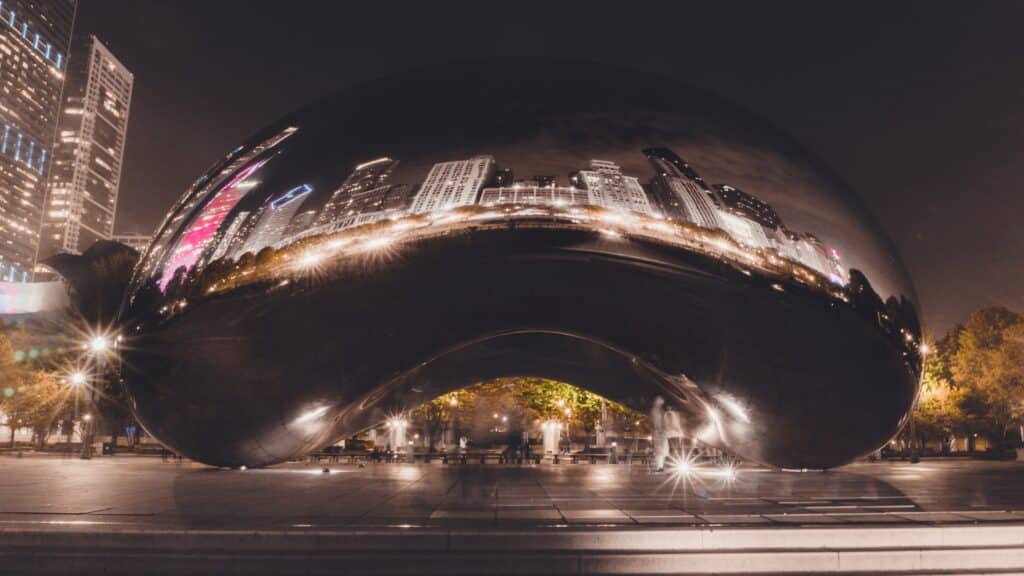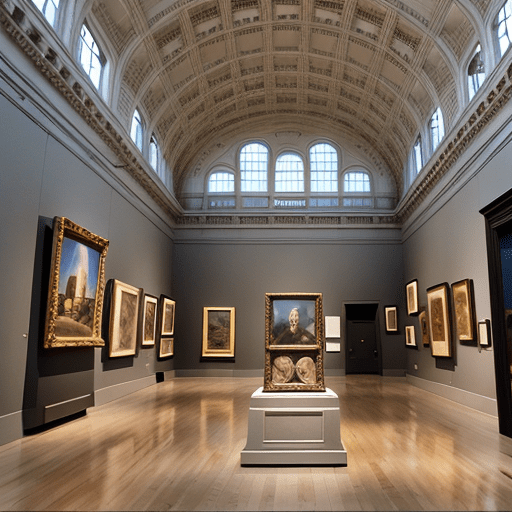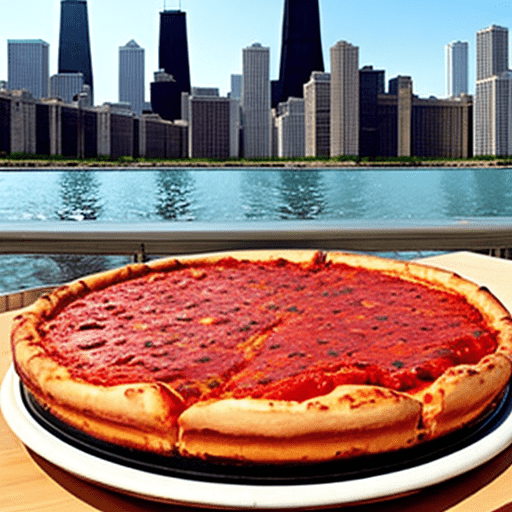The Bean: A Deep Dive into Chicago’s Iconic Sculpture
Cloud Gate, affectionately referred to as “The Bean,” is a renowned piece of public art nestled in the heart of Chicago. This monumental work, with its reflective surface mirroring the city’s impressive skyline and verdant surroundings, has become an integral part of the Chicago experience.
The Genesis of The Bean
The Bean came into existence as a piece of public art, officially titled Cloud Gate. Unveiled in 2004, it has since emerged as one of the world’s largest permanent outdoor art installations and an iconic symbol of Chicago. The sculpture is the brainchild of the internationally renowned artist Anish Kapoor. Known for his large-scale outdoor works, Kapoor designed Cloud Gate, his first permanent public outdoor work in the United States, which has since become his most famous creation.
The Bean’s Location
The Bean is nestled in Millennium Park, a lakefront green space in Chicago’s downtown Loop. It is situated above the McCormick Tribune Plaza, a vibrant hub offering alfresco dining in the summer and a free skating rink in winter. The Bean is hard to miss, especially for those strolling along Michigan Avenue between Randolph and Monroe.
The Bean’s Significance
The captivating reflective surface of The Bean was inspired by liquid mercury. This shiny exterior encapsulates the people moving around the park, the lights of Michigan Avenue, and the surrounding skyline and green space, perfectly representing the Millennium Park experience. The polished surface invites visitors to interact with the artwork by touching the surface and observing their own reflection, adding an interactive quality.
The reflection of the sky above the park and the curved underside of The Bean, which serves as an entrance that visitors can walk under to enter the park, inspired Kapoor to name the piece Cloud Gate.
Behind the Design of The Bean

Internationally acclaimed artist Anish Kapoor is the mastermind behind The Bean. The Indian-born British sculptor was already well-known for his large-scale outdoor works, which often feature highly reflective surfaces. Cloud Gate was his first permanent public outdoor work in the United States and is widely considered his most famous.
The Bean’s Construction
The exterior of The Bean is entirely made of stainless steel. It was created using computer technology to precisely cut 168 massive steel plates, which were then fitted together and welded shut for a completely seamless finish. Inside, it’s made of a network of two large metal rings. The rings are connected via a truss framework, similar to what you might see on a bridge. This allows the sculptures massive weight to be directed to its two base points, creating the iconic “bean” shape and allowing for the large concave area beneath the structure. The Bean’s steel exterior is attached to the inside frame with flexible connectors that let it expand and contract as the weather changes.
Dimensions of The Bean
The Bean is a massive structure, standing 33 feet high, 42 feet wide, and 66 feet long. It weighs about 110 tons — roughly the same as 15 adult elephants.
The Bean’s Moniker
While the piece’s official name is Cloud Gate, artist Anish Kapoor doesn’t title his works until after they’re completed. However, when the structure was still under construction, renderings of the design were released to the public. Once Chicagoans saw the curved, oblong shape they quickly started calling it “The Bean” — and the nickname stuck.
The Bean’s Journey
The Bean was constructed between 2004 and 2006. Initially, Kapoor was not fond of the nickname ‘The Bean’, but he later grew fond of it and even uses this title when referring to his work. Made up of 168 stainless steel plates welded together, its highly polished exterior has no visible seams. It measures 33 by 66 by 42 feet, and weighs 110 short tons.
Kapoor’s design was inspired by liquid mercury and the sculpture’s surface reflects and distorts the city’s skyline. Visitors are able to walk around and under Cloud Gate’s 12-foot high arch. On the underside is the “omphalos” (Greek for “navel”), a concave chamber that warps and multiplies reflections. The sculpture builds upon many of Kapoor’s artistic themes, and it is popular with tourists as a photo-taking opportunity for its unique reflective properties.
The Bean in Popular Culture
The Bean has been featured in several commercial films, most notably in the 2006 Hollywood film The Break-Up, and the 2012 film The Vow. It also appears in the video to “Homecoming”, a song by Chicago native Kanye West, featuring Chris Martin of the band Coldplay.
The Bean’s Maintenance
Kapoor’s contract states that the constructed piece should be expected to survive for 1,000 years. The lower 6 feet of Cloud Gate is wiped down twice a day by hand, while the entire sculpture is cleaned twice a year with 40 U.S. gallons of liquid detergent. The daily cleanings use a Windex-like solution, while the semi-annual cleanings use Tide.
Public Perception of The Bean
The public took an instant liking to the sculpture, affectionately referring to it as “The Bean”. Cloud Gate has become a popular piece of public art and is now a fixture on many souvenirs such as postcards, sweatshirts, and posters. The sculpture has attracted a large number of locals, tourists, and art aficionados from around the world.
The Bean continues to inspire and captivate visitors, offering a unique interaction between art, the cityscape, and the viewer. A visit to Chicago would indeed be incomplete without a trip to The Bean, a true testament to the city’s creative spirit and architectural prowess.


